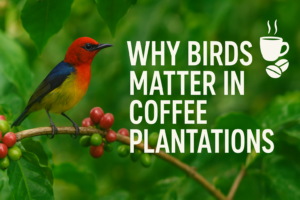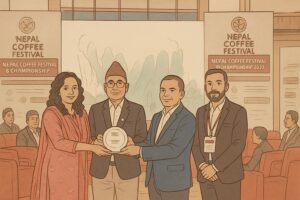
Where Stories, Land, and Coffee Come Alive
Heritage walks are becoming one of India’s fastest-growing cultural movements — and for all the right reasons. Today’s travelers seek more than sightseeing; they want experiences that allow them to feel, learn, and connect. Heritage walks offer this immersive slow-travel approach, revealing the soul of a place through its lanes, landscapes, communities, and memories.
From food alleys and textile corners to old neighborhoods and art districts, India’s walk culture is encouraging people to rediscover history with curiosity and mindfulness. These walks support local communities, revive forgotten narratives, boost small economies, and help travelers build a deeper emotional relationship with the destinations they explore.
And now, this walk culture has found one of its most aromatic chapters — Coffee Heritage Walks. These walks allow you to step into plantations, understand the origins of Indian coffee, witness traditional processing, and meet the people who grow, pick, and protect our beans. They bring to life the legacy, labour, and landscape behind every cup.
Here is Curly Brew’s curated list of India’s top 5 coffee heritage walks — essential for anyone who loves coffee, culture, and storytelling.
1. Chikmagalur Coffee Heritage Walk – Karnataka
Chikmagalur is where Indian coffee first took root, thanks to Baba Budan bringing seven magical beans from Yemen centuries ago. Walking through these estates is like stepping into India’s coffee origin story — misty hills, old Arabica plots, and the timeless rhythm of plantation life.
Notable estates: The Serai Chikmagalur, Mekanagadde Estate, Bean Breeze Coffee Tour.
Why go:
To experience the birthplace of Indian coffee and understand how tradition blends with modern cultivation.
2. Coorg Plantation Trails – Karnataka
Coorg offers a sensory walk through dense forests, pepper vines, cardamom trails, and Kodava culture. These plantation trails highlight the beauty of shade-grown coffee and the region’s harmonious relationship with nature.
Notable estates: The Tamara Coorg, Mercara Gold Estate, Kodagu family-owned plantations.
Why go:
Coorg is a masterclass in sustainability, heritage, and the art of growing coffee within a thriving ecosystem.
3. Araku Valley Coffee Trail – Andhra Pradesh
Araku Valley is home to India’s award-winning tribal coffee — grown organically, hand-harvested, and shaped by indigenous wisdom. The coffee walks here take you through terraced hills, tribal villages, and community-run operations that have transformed Araku into a global name.
Notable estates/organisers: Araku Coffee tribal cooperatives, community-led plantation trails.
Why go:
To witness how coffee can uplift communities, empower farmers, and redefine Indian specialty coffee.
4. Wayanad Coffee Circuit – Kerala
In Wayanad, coffee grows alongside spices, forests, and local traditions that go back centuries. A walk here reveals biodiverse plantations, spice yards, and stories of estates that have preserved their heritage across generations.
Notable estates: Wayanad Coffee Trails, heritage plantations, family-owned spice-coffee estates.
Why go:
For a perfect combination of Kerala’s greenery, tribal stories, and coffee-spice culture.
5. Yercaud Estate Walks – Tamil Nadu
Yercaud, set in the Shevaroy Hills, offers peaceful estate trails known for high-grown Arabica, misty landscapes, and old-world charm. The walks here bring you close to vintage bungalows, quiet plantations, and gentle, scenic routes.
Notable estates: Yercaud Coffee Trails, Shevaroy hill plantations, heritage estates.
Why go:
Ideal for travelers who prefer quiet hills, subtle flavors, and stories steeped in heritage.
Coffee heritage walks remind us of a simple truth — coffee isn’t just brewed; it’s lived.
It’s grown through generations, cared for by communities, shaped by landscapes, and celebrated through culture. For anyone who loves coffee deeply, these trails are not just journeys but pilgrimages into the heart of India’s coffee identity.
Which coffee heritage walk would you love to experience first—and what story would you hope to discover in the cup?





